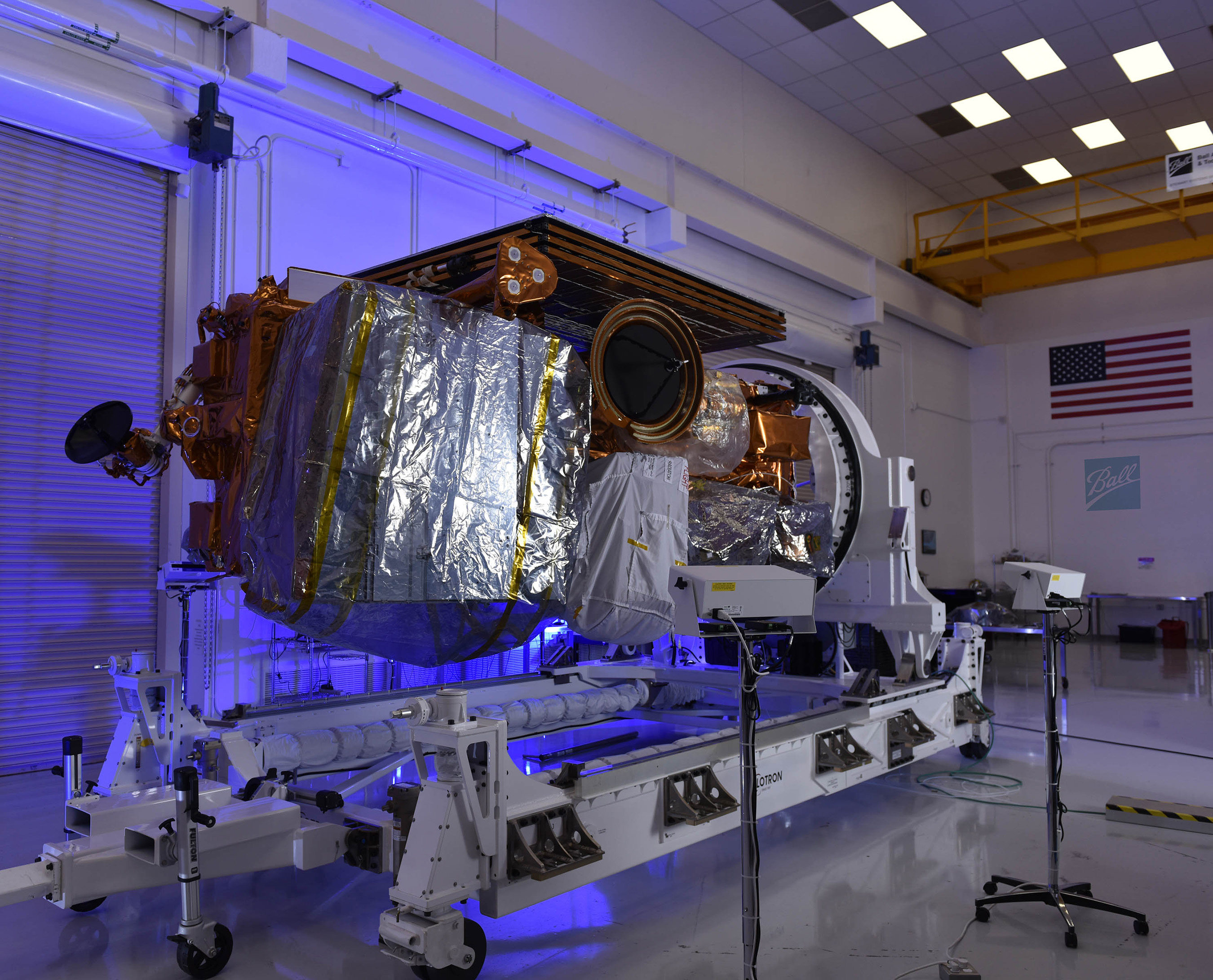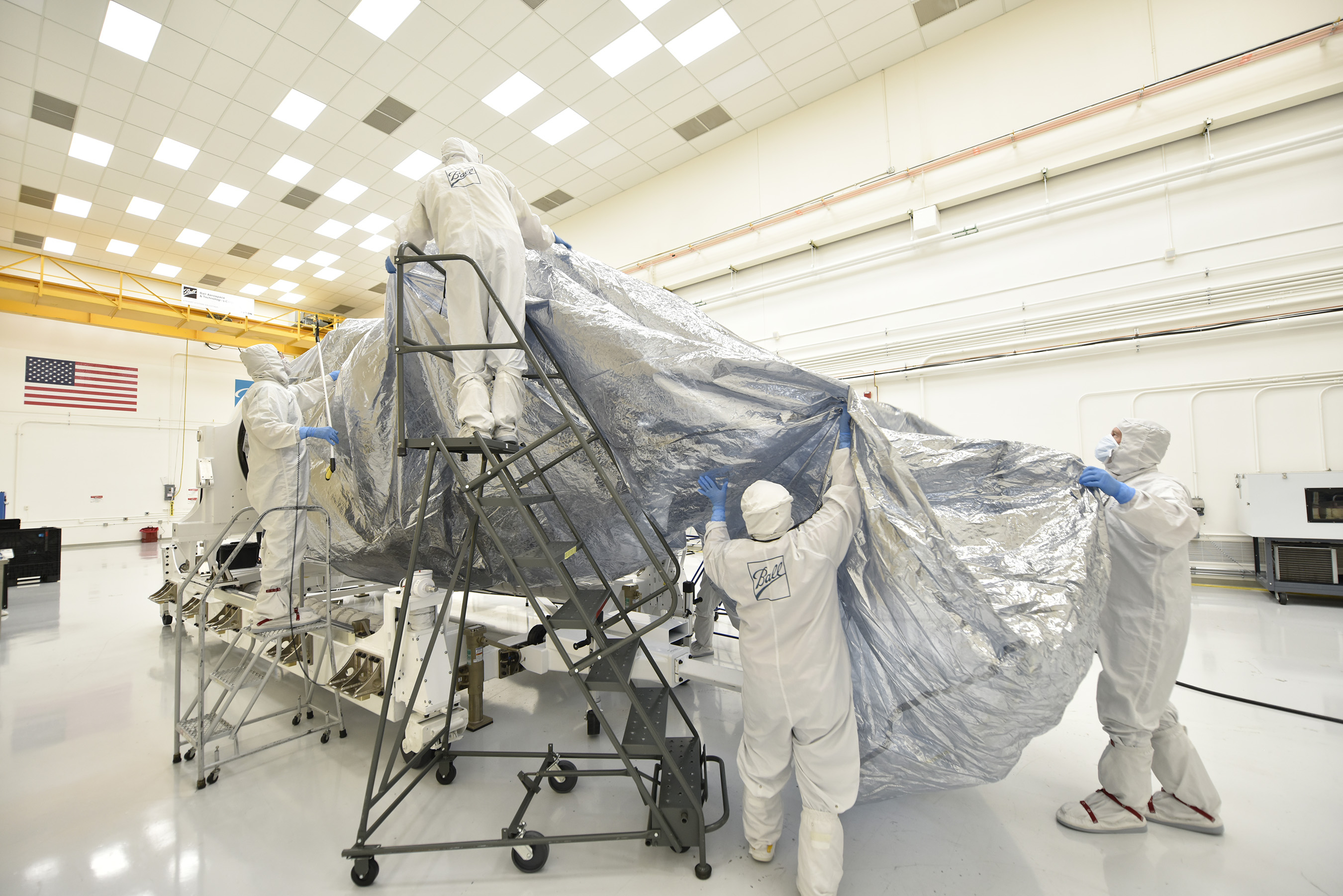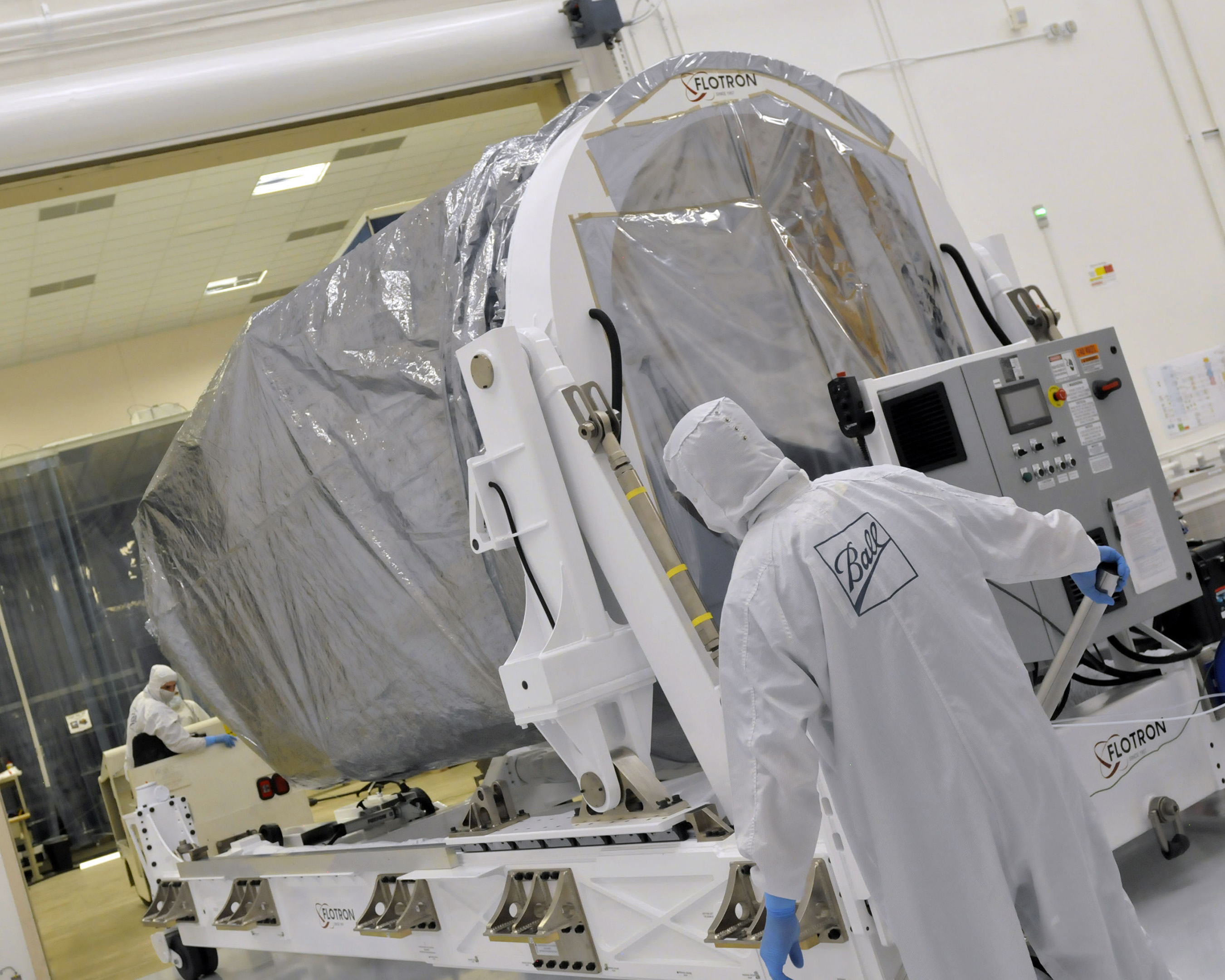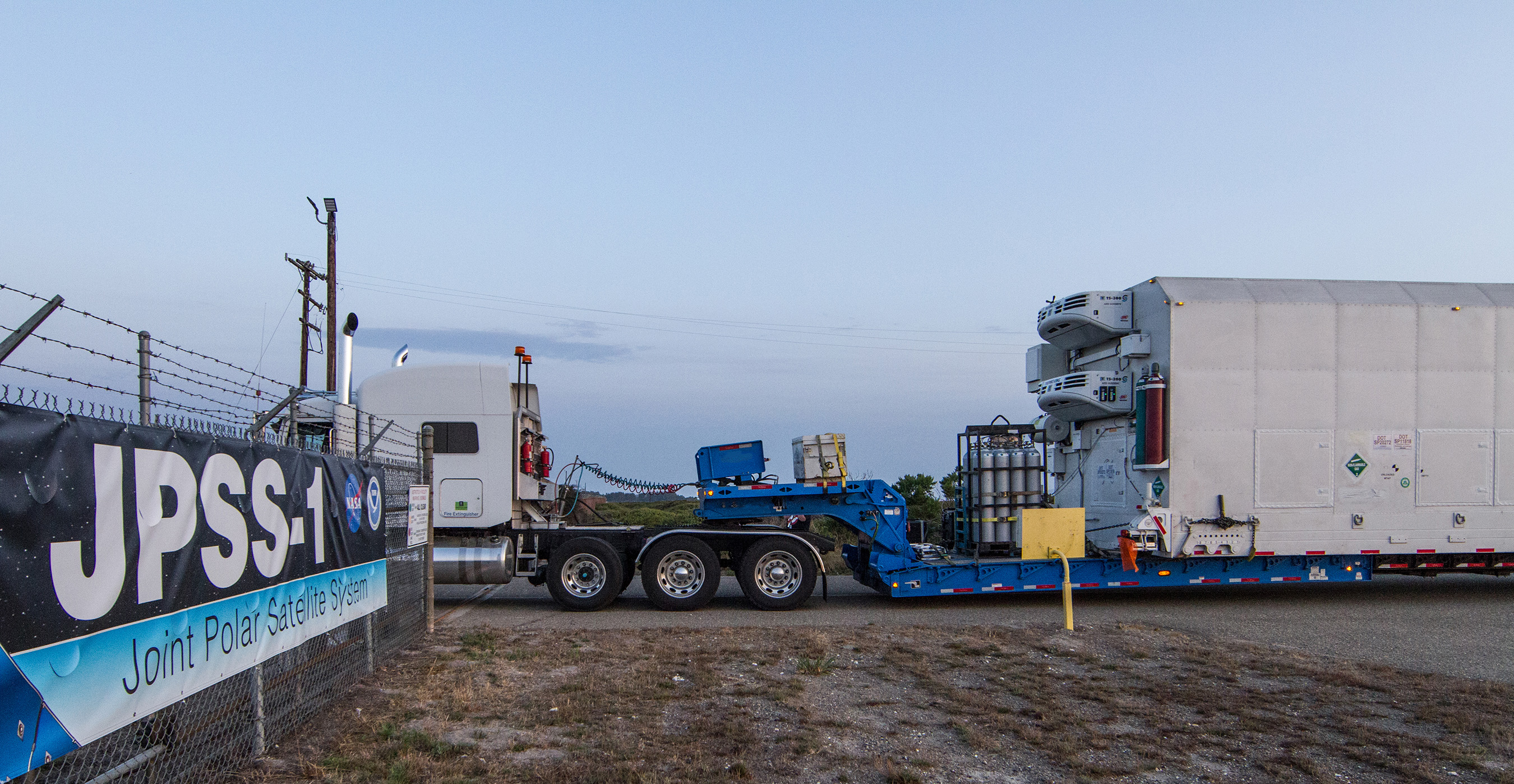NOAA's Next Generation Weather Satellite Prepares for Launch
BOULDER, Colo., Sept. 5, 2017 — (PRNewswire) — Ball Aerospace successfully delivered the Joint Polar Satellite System-1 (JPSS-1), NOAA's next-generation polar orbiting weather satellite, to Vandenberg Air Force Base in California on Aug. 31, where it is scheduled to launch Nov. 10, 2017. This follows a successful pre-ship review with NASA at Ball's Boulder, Colorado, manufacturing complex.Experience the interactive Multichannel News Release here: https://www.multivu.com/players/English/7703951-ball-aerospace-noaa-jpss-1-weather-satellite/

"The arrival of the spacecraft at Vandenberg is a tremendous milestone for the program and the culmination of excellent collaboration and hard work by the JPSS-1 team – NOAA, NASA, Ball, Harris, Raytheon and Northrop Grumman," said Rob Strain, president, Ball Aerospace. "This advanced weather satellite will play a significant role in providing actionable environmental intelligence to decision makers in government and business, and to the general public."
The JPSS series of polar-orbiting weather satellites will work as the foundation of NOAA's operational environmental forecasting system for the next 20 years. The JPSS missions are funded by NOAA to provide global environmental data in low-Earth polar orbit. NASA is the acquisition agent for the flight systems, launch services and components of the ground segment.
JPSS data increases the timeliness and accuracy of numerical forecast models three to seven days in advance of severe weather events. These forecasts allow for early warnings and enable agency managers to make informed decisions to protect American lives and property.
The JPSS-1 satellite will host a suite of state-of-the-art instruments: Advanced Technology Microwave Sounder (ATMS – Northrop Grumman), Cross-track Infrared Sounder (CrIS – Harris), Visible Infrared Imaging Radiometer Suite (VIIRS – Raytheon), Ozone Mapping and Profiler Suite (OMPS – Ball), and Clouds and the Earth's Radiant Energy System (CERES – Northrop Grumman).
Ball designed and built the JPSS-1 spacecraft, the Ozone Mapping and Profiler Suite-Nadir instrument (OMPS), integrated all five of the satellite's instruments, and is performing satellite-level testing and launch support. JPSS-1 will launch aboard a United Launch Alliance Delta II rocket from Vandenberg Air Force Base.
Following launch, JPSS-1 will join the Ball-built NOAA/NASA Suomi NPP satellite which has served as NOAA's primary operational satellite for global weather observations since May 2014. Together, the two satellites, each circling the Earth 14 times per day, will provide global observations for U.S. weather and environmental predictions.
Ball Aerospace pioneers discoveries that enable our customers to perform beyond expectation and protect what matters most. We create innovative space solutions, enable more accurate weather forecasts, drive insightful observations of our planet, deliver actionable data and intelligence, and ensure those who defend our freedom go forward bravely and return home safely. For more information, visit www.ball.com/aerospace or connect with us on Facebook or Twitter.
Ball Corporation supplies innovative, sustainable packaging solutions for beverage, food and household products customers, as well as aerospace and other technologies and services primarily for the U.S. government. Ball Corporation and its subsidiaries employ 18,450 people worldwide and 2016 net sales were $9.1 billion. For more information, visit www.ball.com, or connect with us on Facebook or Twitter.
Forward-Looking Statements
This release contains "forward-looking" statements concerning future events and financial performance. Words such as "expects," "anticipates," "estimates," "believes," "targets," "likely" and similar expressions typically identify forward-looking statements, which are generally any statements other than statements of historical fact. Such statements are based on current expectations or views of the future and are subject to risks and uncertainties, which could cause actual results or events to differ materially from those expressed or implied. You should therefore not place undue reliance upon any forward-looking statements and any of such statements should be read in conjunction with, and, qualified in their entirety by, the cautionary statements referenced below. The company undertakes no obligation to publicly update or revise any forward-looking statements, whether as a result of new information, future events or otherwise. Key factors, risks and uncertainties that could cause actual outcomes and results to be different are summarized in filings with the Securities and Exchange Commission, including Exhibit 99 in our Form 10-K, which are available on our website and at www.sec.gov. Additional factors that might affect: a) our packaging segments include product demand fluctuations; availability/cost of raw materials; competitive packaging, pricing and substitution; changes in climate and weather; competitive activity; failure to achieve synergies, productivity improvements or cost reductions; mandatory deposit or other restrictive packaging laws; customer and supplier consolidation, power and supply chain influence; changes in major customer or supplier contracts or a loss of a major customer or supplier; political instability and sanctions; currency controls; and changes in foreign exchange or tax rates; b) our aerospace segment include funding, authorization, availability and returns of government and commercial contracts; and delays, extensions and technical uncertainties affecting segment contracts; c) the company as a whole include those listed plus: changes in senior management; regulatory action or issues including tax, environmental, health and workplace safety, including U.S. FDA and other actions or public concerns affecting products filled in our containers, or chemicals or substances used in raw materials or in the manufacturing process; technological developments and innovations; litigation; strikes; labor cost changes; rates of return on assets of the company's defined benefit retirement plans; pension changes; uncertainties surrounding geopolitical events and governmental policies both in the U.S. and in other countries, including the U.S. government elections, budget, sequestration and debt limit; reduced cash flow; ability to achieve cost-out initiatives and synergies; interest rates affecting our debt; and successful or unsuccessful acquisitions and divestitures, including with respect to the Rexam PLC acquisition and its integration, or the associated divestiture; the effect of the acquisition or the divestiture on our business relationships, operating results and business generally.












